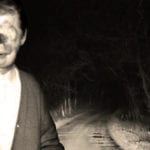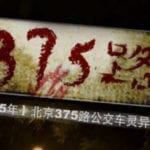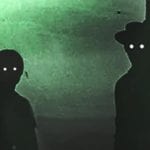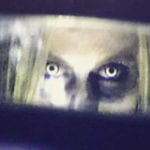 Weird Stuff
Weird Stuff  Weird Stuff
Weird Stuff  Animals
Animals 10 Inspiring Tales of Horses Being Human
 Mysteries
Mysteries Top 10 Haunting Facts About the Ghost Ship MV Alta
 History
History 10 Surprising Stories About the Texas Rangers
 Humans
Humans 10 Philosophers Who Were Driven Mad by Their Own Theories
 Miscellaneous
Miscellaneous 10 Video-Game-Worthy Weapons and Armors from History
 Weird Stuff
Weird Stuff 10 Psychics Who Accurately Predicted Wartime Events
 The Arts
The Arts 10 Pieces of Art Inspired by a Broken Heart
 Health
Health 10 Science Fiction-Sounding New Medical Treatments
 History
History 10 Surprising Facts About the Father of Submarine Warfare
 Weird Stuff
Weird Stuff 10 Times Real Laws Were Based on Bizarre Hypotheticals
 Animals
Animals 10 Inspiring Tales of Horses Being Human
 Mysteries
Mysteries Top 10 Haunting Facts About the Ghost Ship MV Alta
Who's Behind Listverse?

Jamie Frater
Head Editor
Jamie founded Listverse due to an insatiable desire to share fascinating, obscure, and bizarre facts. He has been a guest speaker on numerous national radio and television stations and is a five time published author.
More About Us History
History 10 Surprising Stories About the Texas Rangers
 Humans
Humans 10 Philosophers Who Were Driven Mad by Their Own Theories
 Miscellaneous
Miscellaneous 10 Video-Game-Worthy Weapons and Armors from History
 Weird Stuff
Weird Stuff 10 Psychics Who Accurately Predicted Wartime Events
 The Arts
The Arts 10 Pieces of Art Inspired by a Broken Heart
 Health
Health 10 Science Fiction-Sounding New Medical Treatments
 History
History 10 Surprising Facts About the Father of Submarine Warfare
10 Spooky Hawaiian Legends
Hawaii is a beautiful place with lush scenery, a bright, blue ocean, perfect weather, and wonderful people. But don’t be fooled—there’s definitely a dark side to this paradise. Here are 10 spooky stories commonly told around the local community.
10The Story Of Pele And Pali Road
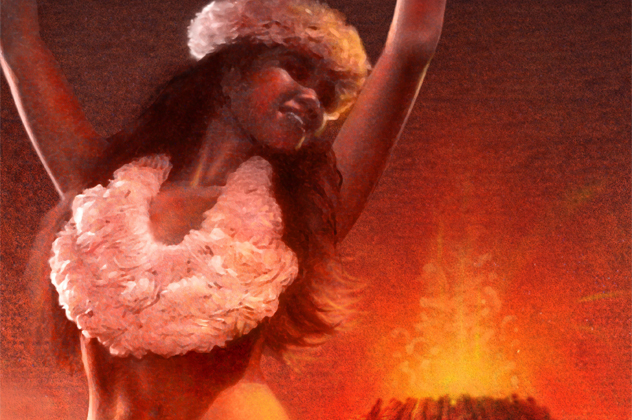
There are various stories pertaining to the rocky relationship between the Hawaiian lava goddess Pele and her hog-faced, demigod lover Kamapua‘a, and one of them a spawned a bizarre urban legend by the Hawaiian people that boils down to one simple rule: Never carry pork over the Pali road.
As the story goes, Pele and Kamapua’a had a turbulent relationship that was doomed from the start. Kamapua’a was the product of an affair between his mother and his mother’s brother-in-law, and his stepfather named him Hog Face and treated him cruelly. Kamapua’a grew up handsome, smart, and powerful, but all he longed for was his stepfather’s acceptance. Kamapua’a’s heart became filled with anger and hate, and he decided to change his appearance by tattooing his face and wearing a boar’s face as a mask. He was then forced to flee his island due to the troubles he had intentionally caused on his stepfather‘s land.
When Kamapua’a arrived in Hawaii, he heard of a gorgeous woman named Pele, so he traveled to the south of the island to ask for her hand in marriage. Pele was so disgusted by his appearance that she fought to keep him away from her. Eventually though, Pele yielded to his efforts and the two got married. Emboldened by her acceptance of him, Kamapua’a’s heart softened and his appearance changed back to his natural good looks. Unfortunately, Pele was so confused by Kamapua’a’s sudden transformation that she pulled away from him and retreated to her side of the island, which was hot and filled with lava. Kamapua’a was forced to live on the other side, where it was wet and lush. The two were forever separated.
In the modern-day urban legend, attempting to carry pork over the Pali Highway, which connects Windward Oahu to Honolulu, will anger Pele and cause your vehicle to break down until you discard the pork. In other versions of the story, an old woman or a white dog will appear, and you must offer the pork to them. The idea is that carrying pork from one side of the island to the other is symbolic of carrying part of Kamapua’a into Pele’s domain.
9Mujina, The Faceless Woman
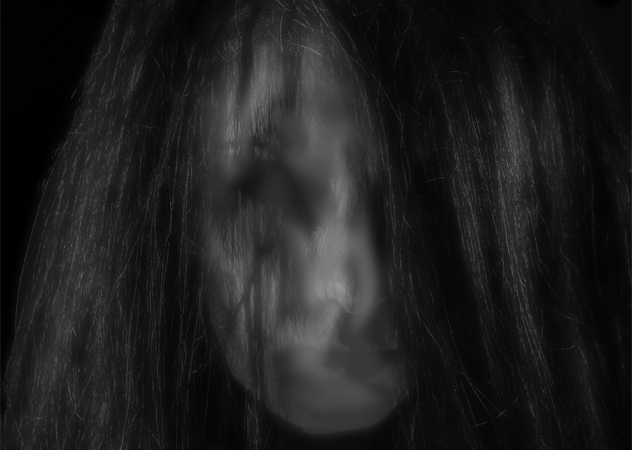
First found in Japanese folklore, a mujina is a creature with no face that can shape-shift into human form. A famous Japanese mujina was named Kozo; he took the form of a monk and traveled the dark roads at night asking strangers for water or tea to drink. Japanese immigrants brought this folklore to Hawaii, and the old tale took on a new spin.
In 1959, a woman was reported to have seen a mujina at a drive-in theater in Kahala. The local woman claimed that she went to use the restroom and noticed another woman combing her hair. Once close enough to see the other woman, she immediately noticed that the red-haired woman did not have any facial features. The woman was reported to have had a nervous breakdown and was treated at a hospital.
Originally, the locals thought that the story was just a rumor, but when local radio host Glen Grant was discussing its validity on-air in 1981, the woman made a personal call into the station and recounted her story, even adding that the mujina she’d encountered had had red hair, a detail which had previously been unreported. Since then, countless stories of the faceless mujina emerged across the islands, some coming from Glen Grant himself.
8The Night Marchers
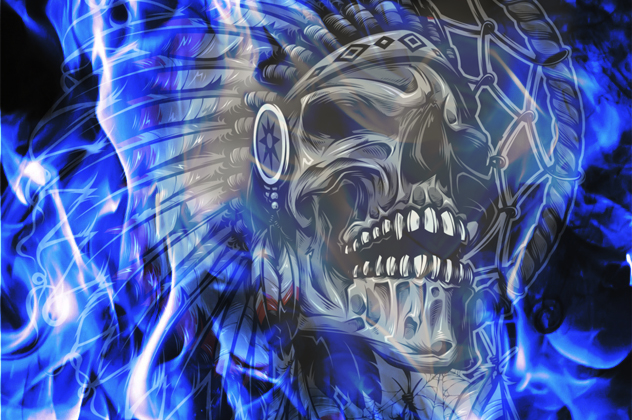
The Huaka’ipo are the spirits of ancient Hawaiian warriors who are eternally cursed to march throughout the islands of Hawaii. Known as the Night Marchers, they are said to march in a single line, often carrying torches and weapons, playing drums, and chanting. The Night Marchers rarely appear during the day, but when they do it means that they are escorting a living relative to the other side. The telling signs that Night Marchers are heading toward you are the sounds of drums getting closer, a foul odor, conch shells being blown, and approaching torchlight.
It is considered an evil omen to look at the Night Marchers, so to protect yourself you must lie facedown on the ground as a sign of respect. If they see you looking at them, the Night Marchers will kill you unless an ancestor recognizes you and claims you as their blood. Because no solid structure built on the Night Marchers’ path can deter them, many locals tell stories of the Night Marchers going through their homes and leaving fear in their hearts.
7The Little People Of Hawaii
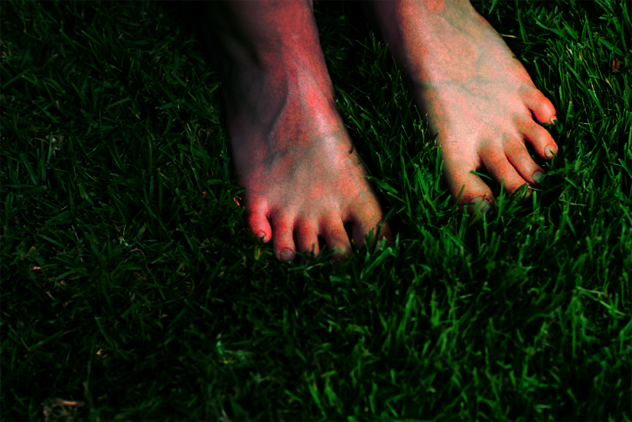
The Menehune, also known in ancient texts as Nawao, are the Hawaiian version of fairies or the leprechauns of Ireland. The Menehune are short in stature—about .6 meters (2 ft) tall—and dwell in lush forests away from civilization. They’re often portrayed as mischievous, but they also possess the supernatural ability to build or construct anything they desire within a day. Known as master builders, they were often hired by the native Hawaiians to build homes, temples, and heiaus ( places of worship). They are very shy people and prefer to work at night when no one is around. If they are caught in the act, they will drop what they’re doing and disappear, never to finish their work. And if you’re the person who interrupts them, you’ll be turned to stone.
These little people were credited for building the largest aquaculture reservoir on the island, Alekoko Fishpond, on Lihue near the Nawiliwili Harbor. Some historians believe that the story of the mythical Menehune could be based on reality. The theory is that the Menehune were real people from Marquesas Island who migrated to the island of Hawaii before it was inhabited by the Tahitians. It is believed that the Tahitian immigrants forced the Menehune to retreat to the deeper part of the forest in an effort to survive.
If you hear the sound of splashing near the beach or waterfall at night, its said to be from a Menehune. Apparently, one of their favorite past times, besides playing pranks on islanders, is diving.
6The Green Lady Of Wahiawa
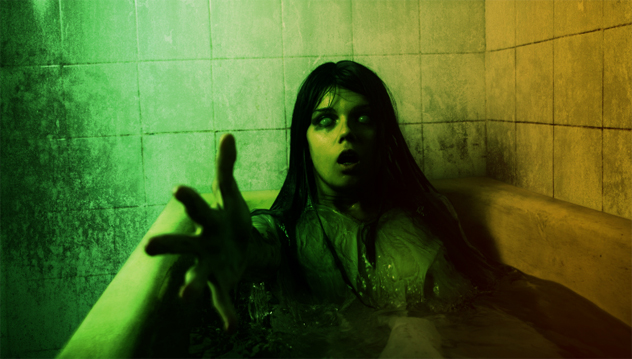
In Japanese, obake is a term often used to describe a thing that changes. Much like the mujina, the obake is a shape-shifter in Japanese folklore. After being brought to Hawaii, the term obake became commonly used for supernatural entities of all kinds, though mostly ghosts or malevolent spirits.
One such spirit is described as a woman covered in moss and green mold who wanders the Wahiawa gulch. The locals call her the Green Lady. She is mostly seen near the Wahiawa Botanical Garden, but reports have surfaced that she can also be seen at the Wahiawa Elementary School. Those who have seen her near the elementary school describe her as a woman with green, fish-like scales, jagged teeth, and hair covered in seaweed.
The common backstory for the Green Lady is that there was once a woman who visited the Wahiawa gulch with her children. While there, one of her children got lost and was never found. The woman died of heartbreak and is said to still roam the Wahiawa area, looking for her lost child. It is also said that she will take any child she comes across.
5The Haunting Of Pearl Harbor

On December 7, 1941, Japan launched its attack on the Naval Station in Pearl Harbor. Thousands were killed and wounded in the strike. But the attacks weren’t solely aimed at the Pearl Harbor Naval Station—the Hickam Air Force Base next to it was targeted as well. Ghostly apparitions, unexplained lights, and eerie noises are said to be common around the historic site.
One building at the Hickam Air Force Base still bears the bullet holes inflicted by the 1941 attack. It is said that this is the location where hundreds of soldiers died from their wounds. Visitors and workers claim to have seen ghostly soldiers walking around the corridors, and footsteps and painful moans can be heard echoing in empty rooms.
There is a guard shack in Hickam that is said to be especially haunted. A soldier was said to have been shot dead inside and, late at night, witnesses say they can see a soldier dressed in a military uniform from the 1940s standing guard in the shack. Other ghosts have been seen at the dock of the USS Arizona, which was at Pearl Harbor when the Japanese attacked. The ship sank and all the soldiers aboard perished. Apparitions of soldiers are rumored to patrol the area even during the day.
Many visitors report feeling a great sense of sadness, being frightened for no apparent reason, or extreme pain. The ghost of a soldier who was shot after leaving his post during the attack is said to haunt the deck of the sunken ship during low tide. Some of the remains of the deceased soldiers are still in the ship to this day.
4Pele In Disguise
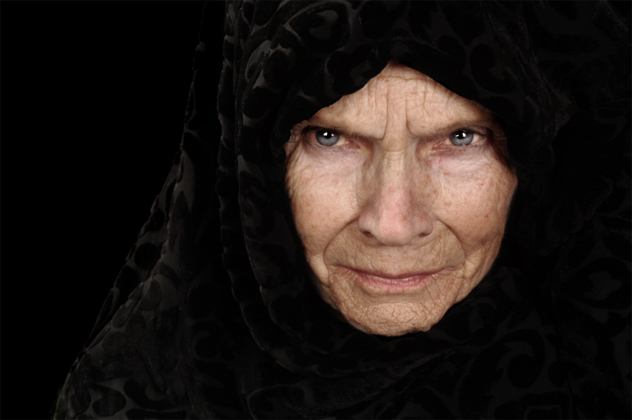
The goddess Pele is commonly referred to as beautiful, but she can also be hot-tempered. Pele often takes the form of a woman in red or an old woman with a cane in order to test the Hawaiian people.
Visitors to the islands claim to have seen a woman in red dancing near the craters of her home, which is now known as the Kilauea National Park. Other tourists claim that an old woman would approach them asking for cigarette, light it with a snap of her finger, then disappear.
Other stories tell of an old woman, believed to be Pele in disguise, who knocks on the doors of strangers in the middle of the night. She will ask for a cup of tea or water, and if the person refuses to help her, death or heartbreak will fall over their family. If the person is kind enough to fetch the old lady something to drink, she disappears, but the homeowner will receive good news the following day.
There is a popular story in Hawaiian legend about Pele punishing those who are selfish and rewarding those who practice the spirit of aloha. The story goes like this: One day, Pele took the form of an old lady with a cane and decided to walk down to the nearest village. She came across a large home filled with banana trees, coconut palms, and a lush garden filled with taro. When Pele peered into the home, she saw a well-dressed family having a feast.
Pele bid them aloha (hello) and told them that she had been walking for a long time and would like something to eat. First she asked for poi—a dish made from taro—but the family said they did not have enough to share, even though they had a garden full of taro. Pele then asked for fish, but the family once again claimed to have very little to share. Pele asked for berries next, but the women of the family lied and said they had none to share because all the berries in their garden were green. After giving the family multiple opportunities to show kindness to a weary, old lady, Pele bowed and went on her way.
Pele continued her journey and came across a humble home. Upon peering through the gates, she saw a family happily enjoying the fruits of their garden. Pele bid them aloha and again asked if they had anything to eat. The family welcomed her in immediately and prepared her a bowl of poi. Pele finished her first bowl and asked for more. Without hesitation, the woman of the house prepared her another dish.
Pele ate and ate until she was full, and not once did the family hesitate to dig into their meager supply of food. The woman of the house told her that she did not have any poi left until the next harvest and that she was glad the old woman had enjoyed her food. Pele stood up and told the family that, because of their kindness, they would be rewarded with a fruitful harvest. Meanwhile, their stingy neighbor’s lush crops would die.
3The Half-Faced Girl Of Old Pali Road

There is no doubt that the Old Pali Road, located in the Nuuanu Valley, appears to be the center for most of Oahu‘s supernatural activities. Way before the current Pali Highway replaced the old road, it was once the site of the most important battles the Hawaiian islands have ever witnessed. In 1795, in a battle for the unification of the Hawaiian islands, King Kamehameha I forced thousands of his opponents to jump to their deaths off the Nuuanu Pali cliff. Their ghosts are still seen falling to this day.
Since then, reports around the area talk of ghostly apparitions such as Night Marchers and a ghostly body hanging from a tree in Morgan’s Corner. One particular ghost story is that of the half-faced young girl.
Locals and visitors to this area claim to have seen the apparition of a young girl with long, black hair skipping rope as she floats down the road. That alone would be horrifying enough, but one witness claimed that the girl’s nose, cheeks, and mouth were missing. Her only features were a pair of large eyes bulging out of their sockets.
The little girl is said to have been the victim of a rape before the man strangled her with her own jump rope and left her lifeless body in the bushes to decompose. The manner of death may explain why the girl’s spirit showcased bulging eyeballs, but there’s only one possible explanation for the missing facial features: Wild animals must have found and eaten parts of her face before authorities were able to recover her.
2Haunting At Morgan’s Corner
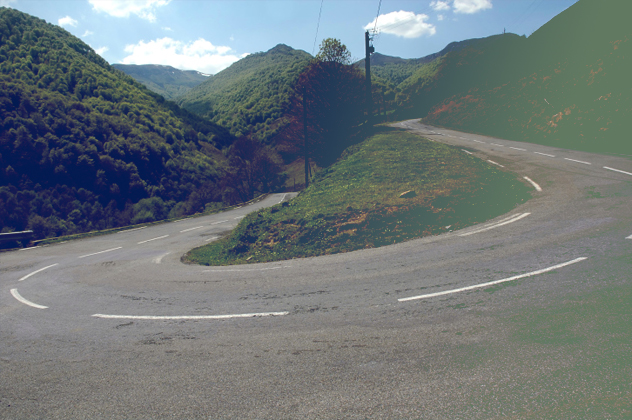
Morgan’s Corner is located on Nuuanu Pali Drive, which leads into the Nuuana Valley. Its name comes from a well-known doctor named Dr. James Morgan who lived on the hairpin turn during the 1920s.
Locals claim that the turn first became haunted in 1948 when a 68-year-old widow by the name of Therese Wilder was viciously murdered in her home by two escaped prisoners. Her gardener, Isabelo Escalante, discovered her dead body, and it wasn’t long before authorities were on the hunt for her killers. Upon capture, the two fugitives confessed to killing Therese Wilder and explained that, after burglarizing a nearby home, they smelled the widow’s cooking and killed her for a bit of supper.
Another story from Morgan’s Corner involves a girl named Brittani Lochmann, who is said to have hanged herself on a tree at the end of Nuuanu Road. Brittani’s body wasn’t discovered for several days, and by the time it was, her body had completely ripped away from her neck, leaving only her head in the noose. Britanni’s head was never reattached to her body, even for her own burial, which locals claim is the reason her spirit still haunts the Nuuanu Pali.
An urban legend tied to Morgan’s Corner tells of a young couple who decided to park their car under a tree one night. When they decided to leave, the car wouldn’t start. The boy told the girl to stay in the car while he got help. Throughout the night, she heard tree branches scratching the car’s roof, but she soon fell asleep despite the noise.
The girl was awakened in the morning by a policeman who ordered her to get out and walk away from the car without turning around. She did as she was asked, but her curiosity got to her and, upon turning around, she saw her dead boyfriend hanging upside down from the tree. His torso was sliced open and his fingers were scraping across the car’s roof.
1The Kaimuki House
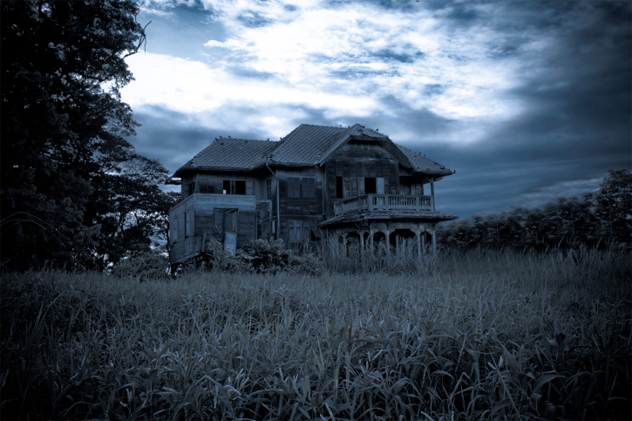
In Japanese folklore, a kasha is a demon or cannibalistic entity that feeds on human corpses, and is said to bring the bodies to hell as punishment for committing mortal sin during life. Though these haunting cases don’t seem to fit the definition, a kasha is believed to reside in the Kaimuki house located on 8th Avenue and Harding in Honolulu, Hawaii.
The history of the house is a gruesome one. The kasha is believed to have first established its residency after a father murdered his family. The bodies of his wife and son were found buried on the property, but his daughter’s was nowhere to be found.
In the summer of 1942, authorities were called onto the Kaimuki property because a woman claimed that an unseen entity was attacking her children. When police arrived at the home, they were confronted by a hysterical woman screaming that a ghost was trying to kill her children. According to reports, the police watched in horror as the invisible force assaulted and threw the children across the room.
And the house was just getting warmed up.
Three women later moved into the Kaimuki home. One night, an invisible force grabbed the arm of one of the women, which frightened the ladies and resulted in a call to the police for assistance. After explaining the incident to the policeman, the women asked if he could follow them as they drove to one of their mothers’ house. Not too long into the drive, the women pulled into a parking lot. The policeman got out to investigate and found the women wrestling with an unseen force, with one woman seemingly being choked. When the policeman attempted to help the lady, he was forced back and restrained by what he described as a “large calloused hand.”
The policeman managed to get the lady being choked out of their vehicle and into his patrol car, but neither of the cars would start. When the policeman let the choking victim go back to her vehicle, both cars purred to life as if nothing had been wrong.
They drove out of the parking lot, but things only got worse. The policeman saw the car door get ripped off the car and tossed to the road, and moments later the choking victim was thrown out of the moving car. The women and policeman were unable to do anything as the kasha choked its victim to death.
In 1977, a young couple who had just moved onto the Kaimuki property arrived back home from an outing and retired to their room. Around midnight, the woman woke up because the room had become so cold. The woman looked around to see if any of the windows were open and saw what appeared to be a large woman with no arms or legs hovering over their bed. Frightened by the incident, the couple consulted with their reverend, who told them to offer food to the spirit because it might just need help returning to where it belonged. The couple followed the reverend’s instructions for a week, and the spirit never returned again.
Writing for Listverse is a dream come true. I love pop culture, superhero movies, and free food.
You can find me on my Twitta’ @MikahMcAllister




